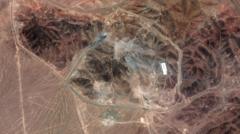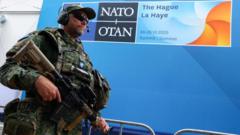As geopolitical tensions rise, Lithuania's capital, Vilnius, has laid out a comprehensive evacuation strategy for its residents, amid concerns surrounding potential military threats from Russia.
Lithuania's Capital Implements Evacuation Strategy Amidst Regional Tensions

Lithuania's Capital Implements Evacuation Strategy Amidst Regional Tensions
Vilnius introduces emergency evacuation plan to safeguard residents in the event of an invasion.
Officials in Vilnius, the capital of Lithuania, have disclosed a detailed evacuation plan designed to facilitate the orderly departure of the city's 540,000 residents in response to a potential invasion. This initiative comes in light of escalating anxieties regarding Russia’s aggressive military posture in Eastern Europe, particularly following its full-scale invasion of Ukraine.
The unveiling of the plan underscores Lithuania’s ongoing vigilance against perceived threats from its eastern neighbor. Alongside fellow Baltic nations Estonia and Latvia, Lithuania has been vocal about the risks posed by Russian expansionism, prompting significant investment in national defense capabilities.
Strategically positioned just 679 kilometers (422 miles) from the Belarusian border, Vilnius is in close proximity to a key ally of Russia. Notably, Belarus hosts thousands of Russian troops and has been implicated in prior military operations targeting Ukraine, including the ill-fated attempt to seize Kyiv in February 2022. Additionally, Lithuania shares a border with Kaliningrad, a heavily armed Russian exclave on the Baltic Sea.
The evacuation strategy, recently announced, outlines 150 designated escape routes and assigns evacuation points across specific neighborhoods. Residents will be alerted to evacuate via text messages and siren warnings. Furthermore, a dedicated communication application is in development to enhance real-time information sharing. To enable efficient egress from the city, the plan also includes proposals to enlarge certain roads and a key bridge.
Mayor Valdas Benkunskas emphasized that an evacuation would only be executed as a final recourse if military defenses were to fail. He reassured citizens that the publication of this strategy should not incite panic and does not signal an immediate escalation of threats.
Notably, the evacuation plan has been shaped by lessons learned from Ukraine’s experience during Russia’s invasion, particularly detailing how Kyiv managed its crisis in the critical early phases. While primarily designed with military invasions in mind, the plan is also adaptable for scenarios involving natural disasters, nuclear threats, or severe infrastructural failures.
Lithuania, which emerged as an independent nation from the Soviet Union in 1990, has devoted itself to forging deeper ties with Western Europe, including joining the European Union. It has also become a staunch advocate for Ukraine’s sovereignty and security.
In September, Belarus and Russia will conduct large-scale military exercises, raising concerns about troop movements near Lithuania's border. The Suwałki gap—a narrow corridor between Kaliningrad and Belarus—has been identified by military strategists as a critical vulnerability for NATO, as its capture would sever crucial land connections from Poland to Lithuania and its Baltic neighbors.






















